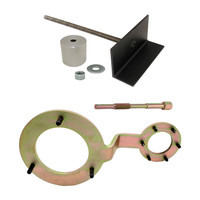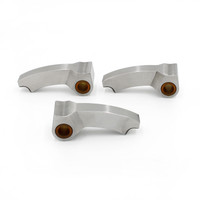 Loading... Please wait...
Loading... Please wait...- Home
- CVT Drive Belt Break-in Tips
CVT Drive Belt Break-in Tips

CVT Drive Belt Break-In Tips
With the demand of today’s high performance machines and the high cost of a quality CVT Drive Belt, breaking in a new belt is important. But……breaking in a new drive belt is one of the hardest things enthusiasts face!
The Clutch Guys test A LOT of different belt compositions as we’re constantly testing new ideas to build a better belt, so we know first-hand how difficult it is to keep speeds down, vary the speed, let things cool down, and just basically “take it easy” for those first 20 miles or so. We certainly understand the pain felt when you’re told to “break in that new belt properly”. The bottom line is that it’s really hard to NOT ride the way we normally like to!
But we can tell you from many years of experience that proper belt break in is definitely worth it.
When you get a new belt, first wash it with soap and hot water. It's important to have a clean belt surface during break-in. If you’re not going to install that new belt right away, be sure to protect it after washing it. You don’t want it getting covered in dirt and grime after you’ve cleaned it. We suggest the EPI Belt Bag for this! This new Drive Belt Storage Bag will keep your belt clean and ready to install when you need it, and comes with handy mounting tabs to secure it on your machine.
Next, clean the clutch surfaces with a Scotchbrite pad or very light sandpaper and then wipe them down with a clean rag and brake cleaner to remove all residue. If you’re replacing a belt on the trail, do your best to wipe them down and get them as clean as possible.
The reason the break-in period is so critical for a new belt is because heat is what kills a belt. Excessive heat causes the materials and compounds that make up the belt to lose their ability to perform properly. Repeated exposure to excessive heat will eventually cause the belt to simply come apart. And heat is generated by the belt slipping. The belt can slip due to:
-
Dirty clutch faces – the belt just can’t grip them
-
Foreign material on the sides of the belt - wash that new belt!
- Improper CVT calibration. If you made modifications to your machine like changing tire size, give us a call. You may need an EPI Clutch Kit to properly calibrate your clutches to match the changes you made or your riding style.
-
Aggressive riding during the break-in period. The new belt needs to “seat” or wear-in to the clutch faces in order to be able to best grip the clutches and not slip. If you put a new belt on and immediately ride aggressively it is going to slip and create a lot of heat, thus greatly shortening the life of the belt.
Once a belt starts to slip and gets overheated, it can lose its ability to grip the clutches effectively. This can be a very gradual process or it can all go to heck very quickly. The longer you can keep things clean and allow your belt to grip without slipping, the longer your belt is going to provide service to you.
So finally, the dreaded “Break-In Period”……
-
The amount of miles needed varies depending on machine, ride style and environment. We like to use 20 miles as a good rule to follow. Use your best judgment and have some patience!
-
“Take it easy” is the golden rule – no high speed runs, no hard launches, vary the speed, stop and allow it to cool a few times.
-
Use Low Range if your machine has it for technical riding, hills, and pulling loads.














